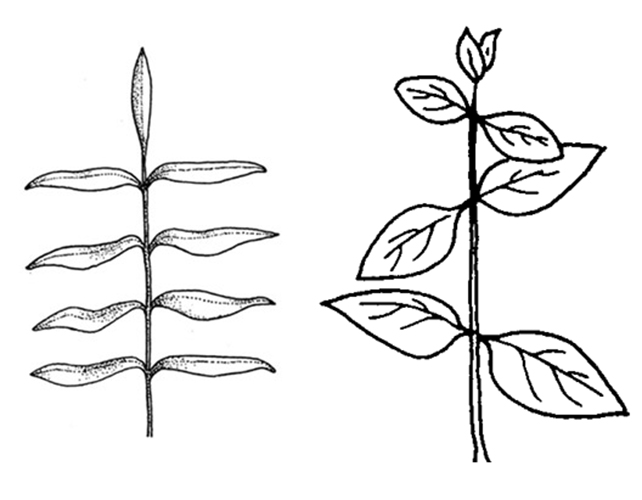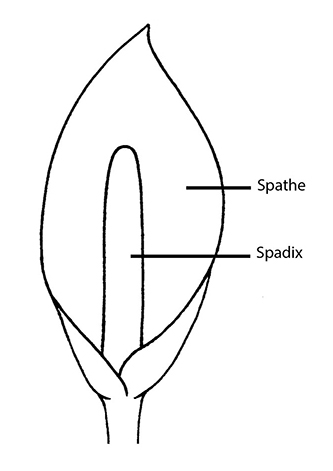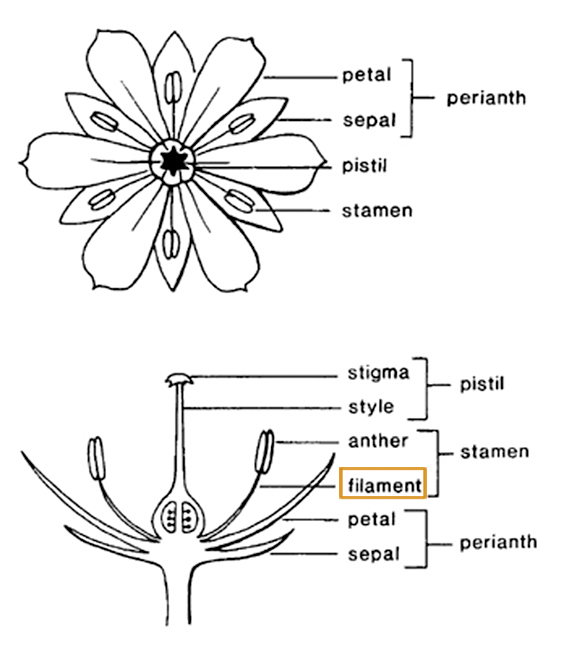Acorus L.
sweetflag
Acoraceae
Carex, Cyperus and other sedges, Iris, Juncus, Lachnanthes, Ophiopogon, Sparganium, Typha, Xyris, Zephyranthes
widespread in tropical and subtropical regions of the world
Acorus calamus L. (and varieties)
A. gramineus Sol.
introduced into many parts of the world
not weedy
reed-like, emergentemergent:
(adj) (syn. emersed) with parts raised out of the water; extending up out of the water

Perennial. Erect plant with creeping rhizomerhizome:
(n) an underground stem, usually growing horizontally, from which both roots and shoots emerge directly; the thick, above-ground stem of ferns
 . Leaves in two sheathed rows, oppositeopposite:
. Leaves in two sheathed rows, oppositeopposite:
(adj) (of leaves) two leaves per node; in pairs on opposite sides of an axis
 distichous, equitantequitant:
distichous, equitantequitant:
(adj) (of leaves) in two rows or ranks, overlapping and folded lengthwise, the whole effect fan-like as in the Iridaceae
 , linear, aromatic, with prominent midribmidrib:
, linear, aromatic, with prominent midribmidrib:
(n) the main or central vein, line or rib in a leaf or perianth segment
 . Inflorescenceinflorescence:
. Inflorescenceinflorescence:
(n) the arrangement of flowers on the floral axis
 a spadixspadix:
a spadixspadix:
(n) a spike of small flowers borne on a thick, fleshy axis
 , yellow-green, borne on stem that is fused with a leaf, arising approximately midway along leaf length. Spadixspadix:
, yellow-green, borne on stem that is fused with a leaf, arising approximately midway along leaf length. Spadixspadix:
(n) a spike of small flowers borne on a thick, fleshy axis
 elongate, with numerous tiny bisexualbisexual:
elongate, with numerous tiny bisexualbisexual:
(adj) having both male and female sexual reproductive structures on one individual or in one flower
 flowers, spathespathe:
flowers, spathespathe:
(n) a large bract or bracts subtending and often enclosing an inflorescence
 absent.
absent.
marshes, swamps, and open ponds
Acorus is often regarded as a close relative of the Arum family (Araceae) and is sometimes included in that family. This plant has been found to have various medicinal, insecticidal, and pharmacological qualities. Acorus spp. are used primarily as pond plants.
The taxonomy of the genus is complicated and currently accepted as two species, of which A. calamus has three varieties:
1. Acorus calamus L. – "Common sweet flag"; sterilesterile:
(adj) lacking male and/or female reproductive parts; not producing fruit, seed, pollen, spores, etc.
 triploid (native to Europe and Southern Asia).
triploid (native to Europe and Southern Asia).
-Acorus calamus var. americanus Raf.
-Acorus calamus var. angustatus Besser
-Acorus calamus var. calamus
2. Acorus gramineus Sol. ex Aiton – “Japanese sweet flag”; fertilefertile:
(adj) producing viable seed, spores, or pollen; capable of reproducing
 diploid (China and Southeast Asia).
diploid (China and Southeast Asia).